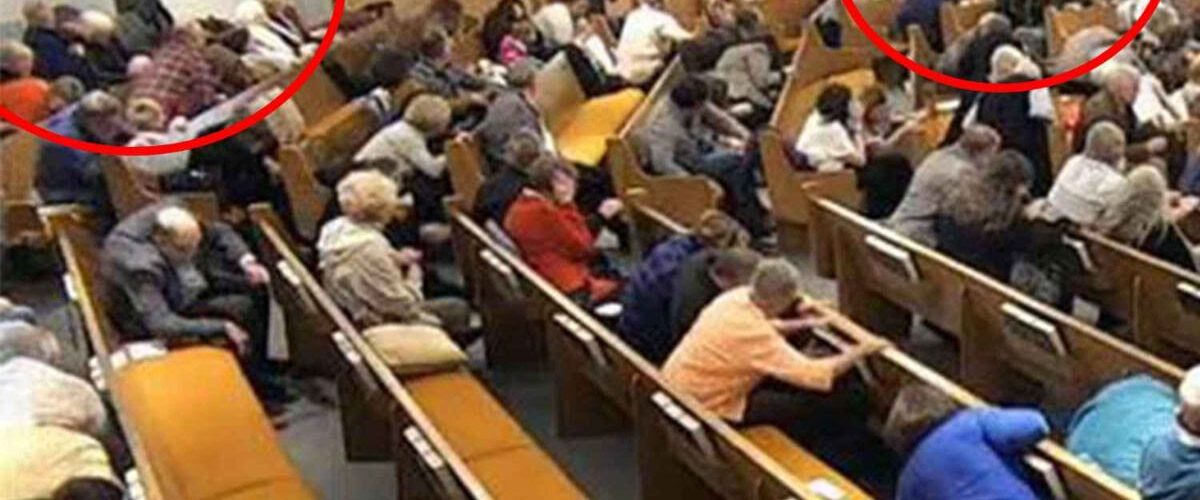
Pro tip for fellow journalists: Parishes have parishioners. Churches of Christ don’t have parishes, so church members or worshipers or congregants or even Christians is probably better to describe the people in the assembly. #Godbeat
— Bobby Ross Jr. (@bobbyross) December 29, 2019
Here is your Bobby Ross, Jr., Church of Christ news style tip of the day, care of Twitter.
“Pro tip for journalists: Parishes have parishioners. Churches of Christ don’t have parishes, so church members or worshipers or congregants or even Christians is probably better to describe the people in the assembly. #Godbeat”.
Now, if that was the only Ross tweet that you read in the hours after the shootings in Fort Worth, then you would think that he was being a bit obsessive, in terms of this narrow focus on how journalists cover his own branch of free-church American congregationalist Protestantism. Actually, Bobby tweeted and retweeted all kinds of information in social media after the shootings. Like this and also this.
But his tweet about the Church of Christ and its unique approach to doctrine, polity and religious language was crucial.
Why? Because news consumers — especially when they are stakeholders in a major news story — tend to distrust the media when coverage includes errors of this kind. It would be like calling a “quarterback” a “point guard” or a “striker” or some similar error in politics and business (topics that newsroom managers tend to respect more than religion).
So what inspired this editorial comment from Ross off? Maybe it was this New York Times headline: “Shooting at Texas Church Leaves 2 Parishioners Dead, Officials Say.”
Now, in defense of the Times, it didn’t help that a police official did use the term “parishioner” in a public remark. However, America’s most influential newsroom did repeat the error — while also using a more accurate term in the same part of the story:
The shooting, which the authorities said lasted six seconds, was captured on video because the church regularly posts its services online. In the video, the gunman stands up during a quiet moment and briefly talks with someone standing against a wall. He then begins firing. Congregants crouch down in their pews. After a third loud bang, the gunman slumps to the ground as people scream.
“He was immediately hit by one of our marksmen,” Mr. Cummings said. “The next thing I know, he was lying on the floor.”
The authorities did not release the names of the two parishioners who had been killed or the gunman, whom the F.B.I. special agent in charge of Dallas described as a transient person with roots in the area. The agent, Matthew J. DeSarno, said the investigation into a motive was continuing.
So is “congregant” the same thing as “parishioner”? It isn’t if you are a member of a flock rooted in free-church polity and congregationalism. “Parish” is a great term, if you are writing about Catholics or people in another tradition built on this kind of ecclesiastical structure.
In the main Ross report — writing as editor of The Christian Chronicle — he used the term “parishioners,” but only inside a direct quotation from a public leader. In his own prose he used accurate language. For example:
Armed members immediately returned fire and killed the shooter at the West Freeway Church of Christ in the Fort Worth suburb of White Settlement.
“Today, evil walked boldly among us,” Tarrant County Sheriff Bill E. Waybourn said at an afternoon news briefing. “But let me remind you: Good people raised up and stopped it before it got worse.”
Jeoff Williams, regional director of the Texas Department of Public Safety, said: “The citizens who were inside that church undoubtedly saved 242 other parishioners. … The true heroes are the people who were sitting in those pews today — the immediate responders who saved their fellow citizens. I just can’t overstate how critical that is for everyone to recognize. It is truly heroic.”
Ross had a chance to view the YouTube video of the attack, which was briefly online (because the church live-streams its services to members who cannot attend). Thus, he wrote:
A video of the church’s worship assembly, viewed by The Christian Chronicle, showed a man saying something to a member holding a communion tray. Then the man backed up, pulled out a weapon and fired at that member and another man near the back of the nearly full auditorium. In just a few seconds, at least one armed member returned fire, and the shooter fell to the ground.
At least two additional people with handguns approached the gunman as the gunfire ended — the loud blasts replaced with screams and tears from the shocked congregation.
Does it matter whether journalists use language that is accurate and appropriate when covering believers who are part of different religious traditions? Does accurate language matter when professionals cover science, politics, sports or the arts?
Just saying.
UPDATE: Maybe Ross saw this headline, at USA Today? As in: “ ‘Heroic’ parishioners end Texas church shootout in 6 seconds, authorities say; 3 dead, including gunman.”
Then again, the overture states:
A man pulled out a shotgun inside a North Texas church on Sunday and opened fire, killing two people, authorities said. It could have been far worse.
Two congregants, both volunteer members of the church’s security team, drew their weapons and confronted the gunman, fatally shooting him and saving an “untold number of lives” at West Freeway Church of Christ in White Settlement, a town of about 17,000 people near Fort Worth.
IMAGES WITH THIS POST: Screenshots from the streaming video on Sunday at West Freeway Church of Christ, during the Sunday attack and earlier in the service.










